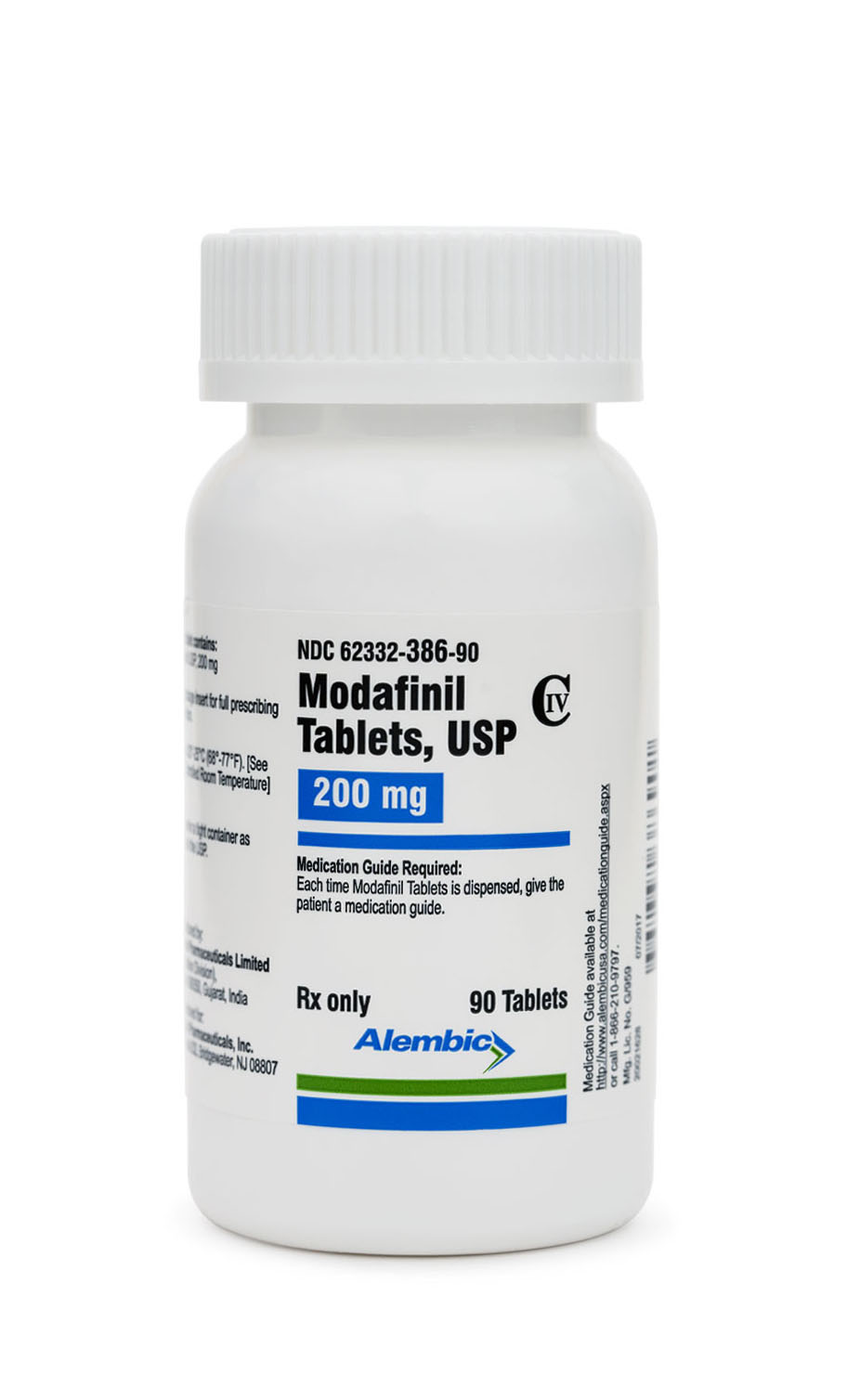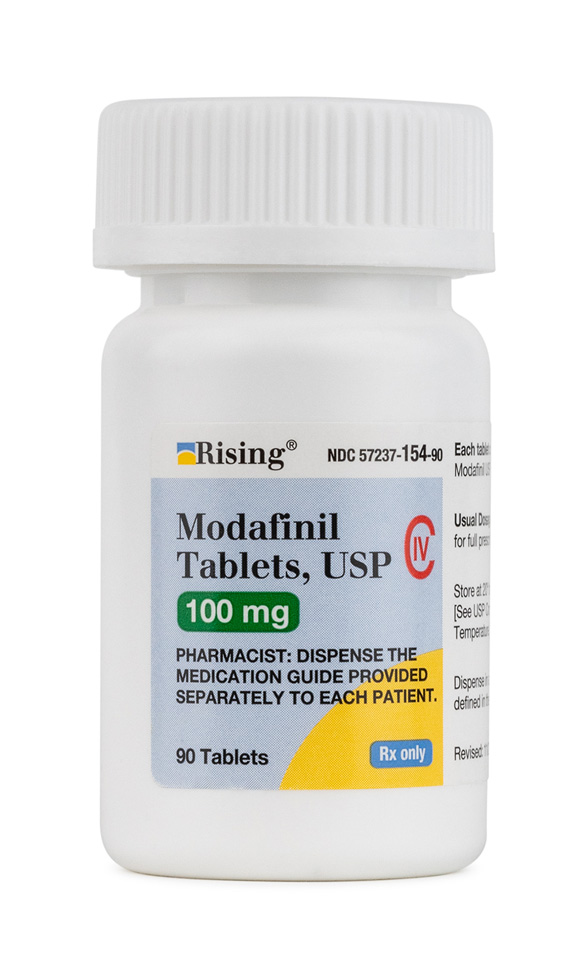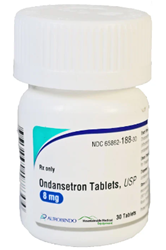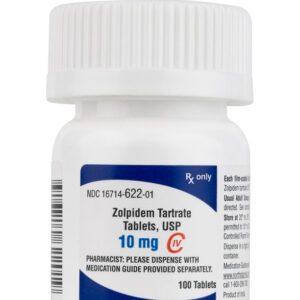Modafinil 100mg & 200mg
Dosages
Doses: 100mg & 200mg
Mechanisms of Action
The exact mechanism of modafinil’s action in reducing somnolence is not fully understood. The enantiomers of modafinil appear to have similar pharmacologic profiles. Modafinil-induced wakefulness can be attenuated by the alpha-1 adrenergic antagonist, prazosin, which led to the initial conclusion that modafinil stimulates the central alpha-1 adrenergic system. However, in vitro assay systems responsive to alpha-adrenergic stimulation have not shown that modafinil is a direct or indirect alpha-1 adrenergic agonist. The primary sites of modafinil’s CNS activity appear to be in the subregions of the hippocampus, the centrolateral nucleus of the thalamus, and the central nucleus of the amygdala. Limited animal studies demonstrate that modafinil may increase excitatory glutaminergic transmission in the thalamus and hippocampus. In contrast to the amphetamines and other CNS stimulants, the effects of modafinil do not appear to be mediated by dopamine or sympathomimetic systems. In vitro and in vivo studies demonstrate that modafinil does not bind to most of the neurochemical receptors involved in sleep-wake cycles, including norepinephrine, serotonin, dopamine, GABA, adenosine, histamine, monoamine oxidase B, and benzodiazepines. Modafinil also does not alter hormones associated with sleep regulation (i.e., melatonin, cortisol, or growth hormone). Modafinil-induced wakefulness does not influence nocturnal sleep patterns or the incidence of cataplexy in narcoleptic patients. In the periphery, the actions of modafinil appear to be minimal at normally prescribed doses. Modafinil doses of > 800 mg per day have produced symptoms of increased blood pressure and heart rate.
Modafinil produces euphoric and psychoactive effects that are similar to other CNS stimulants, including methylphenidate and the amphetamines. Reinforcing behavior, including incrementation of dose and modafinil-seeking behavior, has been observed in monkeys previously trained to self-administer cocaine. However, modafinil is over 200 times less potent than dextroamphetamine in producing addictive behaviors. In an inpatient study of humans experienced with drugs of abuse, modafinil produced psychoactive behavior, feelings, and euphoric effects comparable to methylphenidate; modafinil was partially discriminated as ‘stimulant-like’. Modafinil may potentially lead to habitual psychological dependence in some individuals. No specific withdrawal symptoms have been reported upon modafinil discontinuation in clinical studies. Unlike the amphetamines, modafinil has not been demonstrated to promote weight loss.
Contraindications & Precautions
Modafinil is contraindicated in any patient with known hypersensitivity to modafinil, or the related compound armodafinil, or any of their inactive ingredients. Life-threatening serious rash (including Stevens-Johnson syndrome (SJS), toxic epidermal necrolysis (TEN), drug rash with eosinophilia and systemic symptoms (DRESS), erythema multiforme, and multi-organ hypersensitivity reaction) have occurred in association with modafinil therapy in adult and pediatric patients. Most rashes have developed within 1—5 weeks of treatment initiation. However, prolonged administration should not preclude the possibility of an association to the drug. Modafinil should be discontinued if rash or other hypersensitivity reaction appears at any time during treatment if an association to the drug is suspected or confirmed. Angioedema has been reported during post-marketing use of the drug. Patients should be instructed to immediately report swelling of the face, eyes, lips, tongue or larynx, difficulty in swallowing or breathing, or hoarseness to their health care provider, and seek emergent medical treatment.
Interactions
Please discuss with your healthcare provider.
Adverse Reactions
During clinical trials of modafinil for narcolepsy, obstructive sleep apnea (OSA), and shift work disorder (SWD) in adults, the following centrally-mediated adverse effects were reported more frequently in patients receiving modafinil than placebo: insomnia (5% vs 1%), dizziness (5% vs 4%), paresthesias (2% vs 0%), drowsiness (2% vs 1%), hypertonia (1% vs 0%), dyskinesia (1% vs 0%), hyperkinesis (1% vs 0%), tremor (1% vs 0%), vertigo (1% vs 0%), and headache (34% vs 23%).
Storage
Store this medication at 68°F to 77°F (20°C to 25°C) and away from heat, moisture and light. Keep all medicine out of the reach of children. Throw away any unused medicine after the beyond use date. Do not flush unused medications or pour down a sink or drain.






